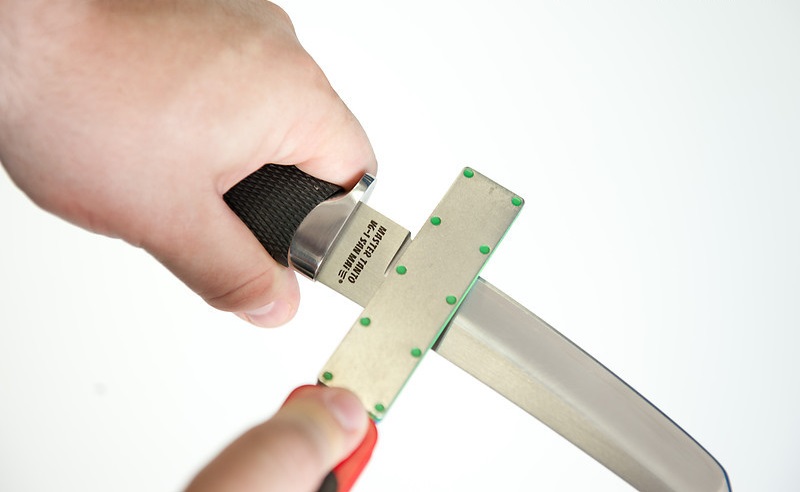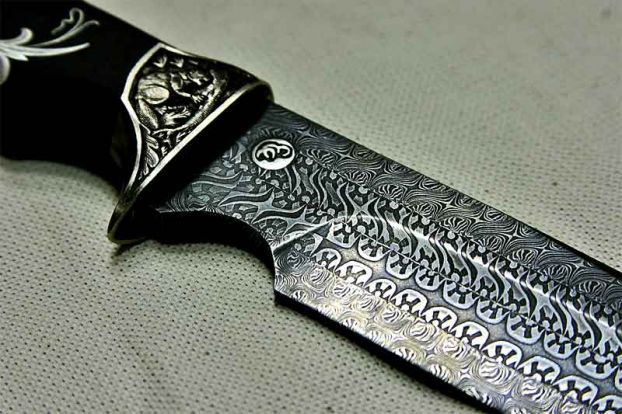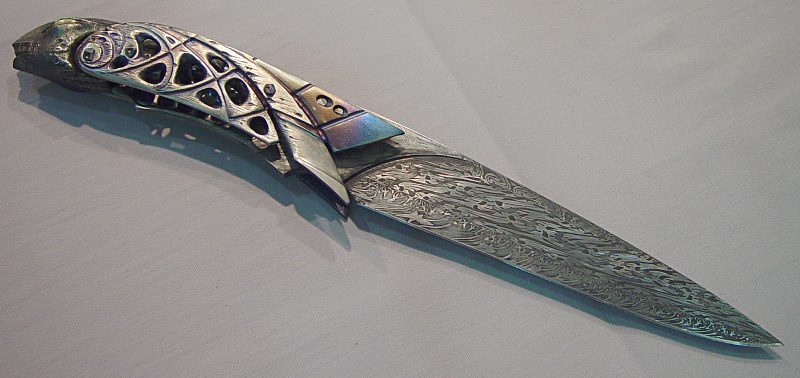The best steel for a hunting knife
A hunting knife will be your faithful assistant in any situation, but only if it is made of good steel. When choosing this point, you need to pay attention first of all - because the quality of the material determines how easy it is to sharpen the blade and how long it will remain sharp. Let's figure out what steel the best blades for hunting knives are made of.
Characteristics of steel
A good material for making a blade should be strong and durable. It is important that the hunting knife cuts well, and not saws or chops - there are other tools for such purposes.
One of the most important characteristics is carbon content. The operational properties of the knife, and primarily its strength, depend on the amount of this element.
According to this parameter, alloys are divided into high- and low-carbon. When the carbon content increases to 2.14% or more, the alloy turns into cast iron - a brittle and quickly rusting material that is not suitable for making blades.
The main parameters of the material on which the performance characteristics of the knife depend:
- hardness;
- strength;
- corrosion resistance.
Hardness
The hardness of the alloy is measured according to the so-called Rockwell scale in special units - HRC. The higher the carbon content, the higher this parameter. Blades made of hard material hold an edge for as long as possible, but at the same time they are characterized by increased fragility. In addition, hunting knives made of high-carbon alloy are quite difficult to sharpen, which can pose a problem, especially in field conditions.

For hunting, knives made of steel with a hardness of 55-60 HRC are suitable. Such blades cut well, but do not saw or chop. Alloys with a hardness below 55 HRC are too soft; blades made of such material will quickly become dull after sharpening. If the blade is harder than 60 HRC, it will not be easy to give it the desired sharpness, especially in the field. In addition, such a blade is quite easy to break.
Durability of a hunting knife blade
Strength is a characteristic no less important than hardness. The higher this parameter, the less likely it is that chips will appear on the blade during use. In addition, durable blades bend under load but do not break.
The higher the strength of the alloy, the lower its hardness, and vice versa. Accordingly, an improvement in one of these characteristics inevitably leads to a deterioration in the other. There is no clear answer to the question of which steel is best for a hunting knife. When making blades, each manufacturer strives to find the optimal ratio of hardness and strength of the material.
Corrosion resistance
This indicator characterizes the ability of steel to withstand environmental influences. As a result of constant contact with water and blood, the material begins to rust. The corrosion resistance of an alloy can only be increased by deteriorating its other characteristics.
Titanium coating
You can also find knives with titanium coating on sale. They can always be distinguished by the presence of black or golden color. After applying a layer of titanium, the hardness of the blade increases significantly - it can reach up to 90 HRC, as a result the blade receives additional protection against corrosion and holds the initial factory sharpening well. At the same time, the strength remains unchanged.

Alloying Additives
To improve the characteristics of the alloy, alloying additives are included in its composition. Most often used:
- manganese: thanks to the addition of this component, forging becomes possible, as a result of which a blade of the desired shape can be made;
- chromium: this element increases the material’s resistance to corrosion and makes it stronger;
- nickel increases corrosion resistance and strength;
- vanadium: the inclusion of this element also makes the steel stronger, more load-resistant and durable;
- molybdenum increases the strength and durability of the blade, as a result, thanks to the inclusion of this element in the alloy, the knife becomes resistant to any, including the most extreme, loads, while its price increases significantly;
- silicon: makes the alloy more malleable and also stronger;
- tungsten increases the strength of the material, its corrosion resistance and scratch resistance.
Special types of steel
Separately, it is worth mentioning materials such as Damascus steel and damask steel. They are used in the manufacture of hunting knives, but this does not happen often.
Damascus steel
Damascus steel is a material with a hardness of about 60 HRC, which is characterized by increased strength and high cutting properties, and retains its sharpness for a long time. Blades made from it look very beautiful thanks to the intricate patterns formed due to the heterogeneous structure of such steel.

The main disadvantage of the material is low corrosion resistance. To extend the service life of blades made of Damascus steel, they must be protected from moisture, wiped dry after use, and regularly coated with special oils. This material is used quite rarely for the manufacture of hunting knives.
Bulat
Just like Damascus steel, damask steel has a unique internal structure and stands out due to its original appearance. The main components of this material are iron and carbon, and the content of the latter is very high, and in this parameter damask steel is close to cast iron. At the same time, it combines high flexibility with strength thanks to its special structure.
The widespread opinion about damask steel as the pinnacle of perfection is not entirely true, so you should not think that the best hunting knives are made from it. Today this material is primarily of artistic interest.. A model with a damask blade can be an excellent souvenir, but in terms of its performance characteristics it is not superior to “regular” steel.

Steel grades
420
One of the cheapest alloys for making blades with a carbon content of 0.5%. It is easy to sharpen, highly resistant to corrosion and durable. The disadvantage of this brand is that a blade made from it quickly loses its sharpness. This is far from the best steel for a hunting knife; the 420 series is used mainly for the manufacture of kitchen knives; inexpensive hunting models are also made from it.
440A
The hardness of this steel is 56 HRC, carbon content is 0.75%. The most common of all 440 series alloys.
440B
An alloy with a hardness of 58 HRC, which contains 0.9% carbon. Has good resistance to corrosion and stress.
440C
High-tech stainless alloy with a carbon content of 1.2%, hardness 60 HRC, which holds an edge well. This is perhaps the best steel for a hunting knife in terms of quality and price.
AUS-4
Japanese brand, analogue of 420 alloy.
AUS-6
Japanese analogue of alloy 440A.
AUS-8
Japanese brand, analogue 440B.
AUS-10
The Japanese analogue of the 440C brand, which has a reduced chromium content, which makes it less resistant to corrosion.
N-1
Stainless steel for the knife with a hardness of 58 HRC. This material holds an edge for a long time and is highly resistant to corrosion. Spyderco knives are made from N-1 alloy.
Inox
Strong, durable and corrosion-resistant alloy for making blades with a hardness of 54-57 HRC. The Opinel company makes knives from it.
There is a wide variety of steels on the market today from which blades of hunting knives are made, and it’s up to you to decide which one to choose. A blade made of a good alloy can be used for a long time without losing its working properties; such a knife will serve you faithfully for many years, even with intensive use.
Of course, the quality of the material is not the only important point; when choosing, you also need to pay attention to the size and shape of the blade, and the comfort of the handle. Take your time with the purchase, and you will be able to purchase a truly high-quality, convenient and reliable knife.
It might be useful to read:
- Beaver catching at different times of the year;
- Emergency aid for drowning;
- How to behave in a thunderstorm. Safety regulations;
- How to make a fish dryer with your own hands;
- Medical glue "bf";
- The first sensible review of dry rations from a woman;
- The best steel for a hunting knife;
- Do-it-yourself sundial: decorate the dacha and kindergarten playground;